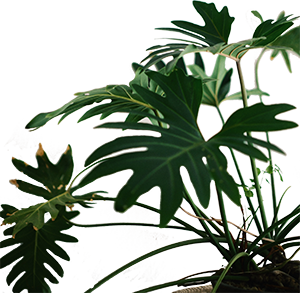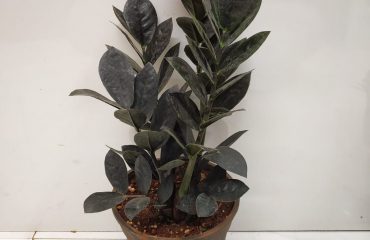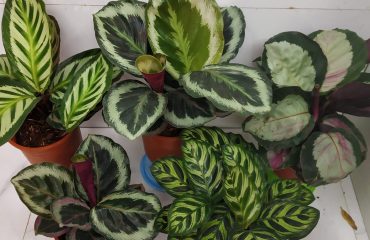How to care for Calatheas Plants?
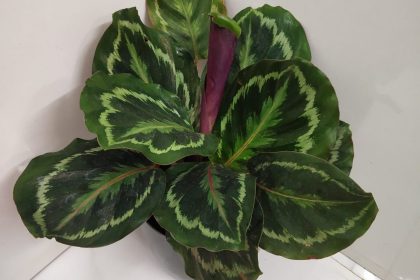
The Calathea Plant goes by many names: Peacock Plant, Zebra Plant, Prayer Plant, even Rattlesnake Plant. These names were coined because of their striking foliage that’s enriched with vibrant colours and patterns. Each variety is unique in shape, size and colour.
When it comes to Calathea Plant Care, they can be a little more temperamental than others and are better suited to people with previous plant care experience. If you’re on the lookout for low maintenance house plants then this one might not be for you.
If you fancy diving in at the deep end then keep reading our Calathea Plant Care Guide for all the need to know information on taking care of your indoor plant.

Caring for Calathea Plants
The Calathea Plant are great at manoeuvring their leaves to get the most out of their environment, throughout the day you will notice the foliage twists and turns ever so slightly making minor adjustments based on the light and temperature of the room. They even curl their leaves up at night as part of their circadian rhythm.
Some types of Calathea plants are known to bloom in the wild, however, this isn’t common when they’re kept as house plants. As for the varieties that don’t bloom, they make up for it with their lush vibrant leaves varying in colours and patterns. Some have feather-like you could swear have been painted by hand.
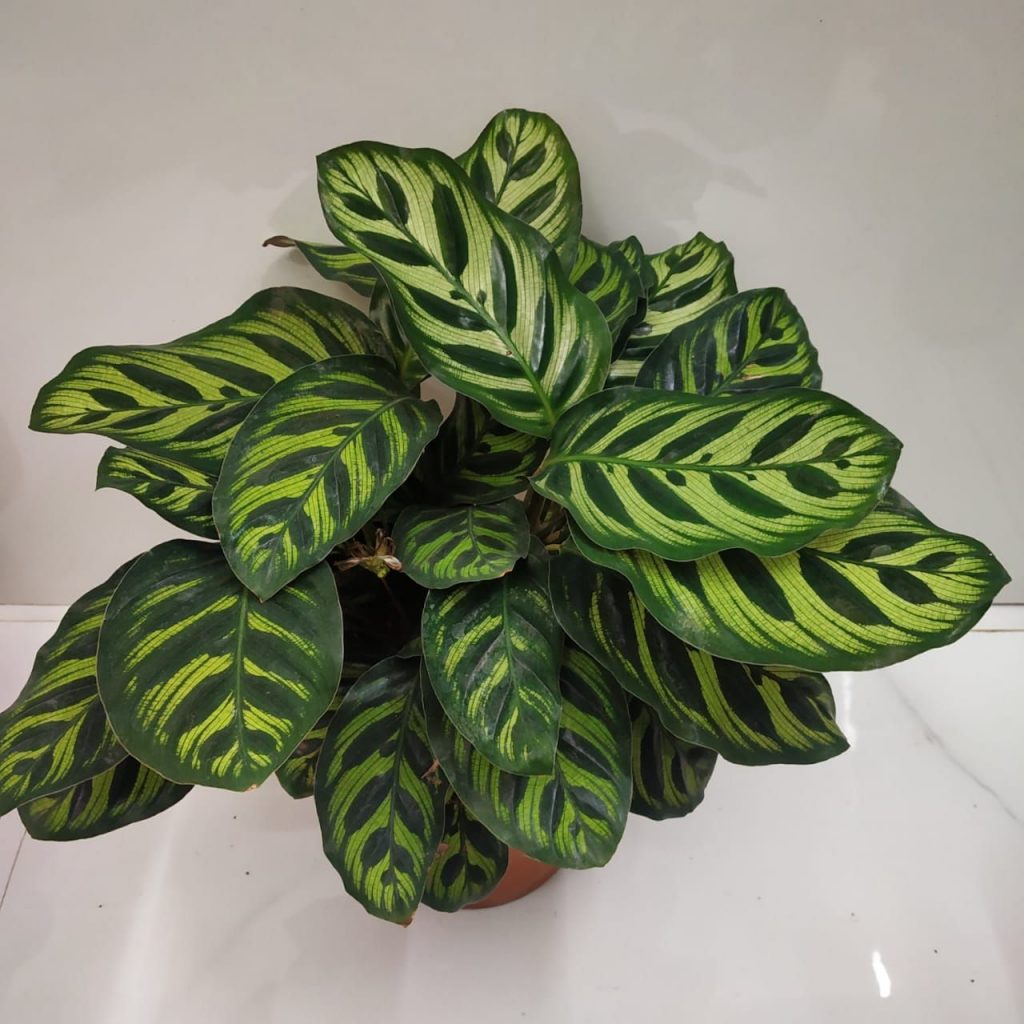
Calathea Plant Soil
Calathea plants can grow pretty well in most high-quality potting soils, however, they prefer something that is light and well-draining while still holding onto a good amount of moisture.
If you choose to mix your own compost, the perfect mixture consists of 1 part soil, 2 parts peat, and 2 parts perlite. For the ideal shop-bought mix you can opt for an African violet mix.
Repotting your Calathea Plant
The best time to repot your Calathea Plant is during the active growing season. This is throughout spring and summer when the plant is pushing out lots of new growth and can grow into its new home with ease.
Make sure to choose a pot that is only 1-2 inches bigger than the current one, this means it has space to grow but won’t be left with with too much soil that will stay wet when it’s been watered.
Ensure that the pot you choose has sufficient drainage holes in the base. When planting into a plastic pot it is always possible to drill a few extra if needed.
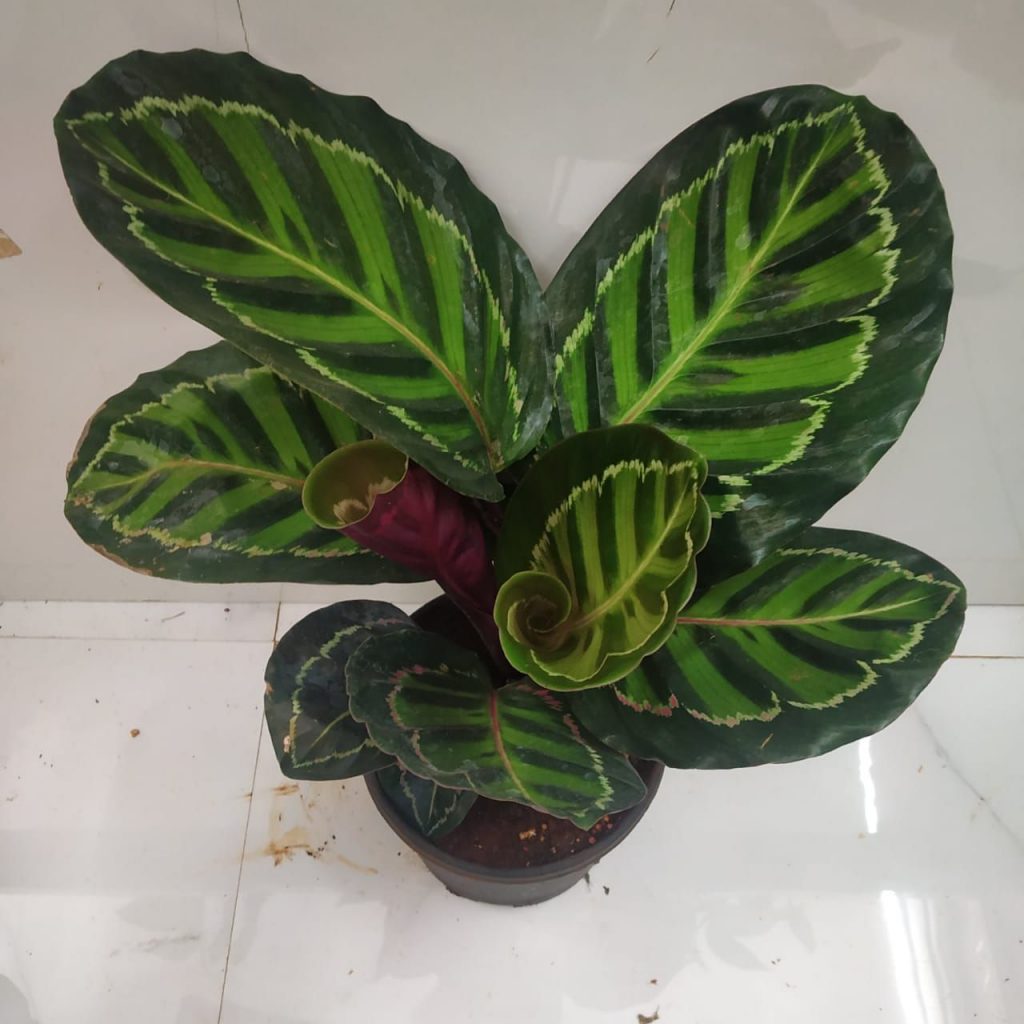
Calathea Plant Light Needs
As Calathea Plants are usually found growing on the floor of the jungle, the light they receive is bright but shaded and dappled through the canopy. Place in a room that gets plenty of bright indirect light but avoid any direct sunlight on the foliage as this can cause discolouration.
The best location for calathea varieties would be near north or east-facing windows where it can get a good few hours of light each day. If south-facing windows are your only option, a sheer net curtain is usually enough to filter out strong rays. See our other medium light plants for some other options.
Watering your Calathea Plant
The general rule of thumb when it comes to watering a Calathea Plant is little but often. The compost should always remain moist, but never left wet or sitting in water. Avoid letting it dry out as much as possible as the plant will start to wilt very quickly.
When watering your plants try to use rainwater or distilled water where possible. Plants can be sensitive to chlorine and cold water straight from the tap can cause shock to the roots.
If you decide to water your plants with tap water then fill a jug and leave on the side for a couple of hours. This warms the water to room temperature while giving enough time for the chlorine to evaporate.
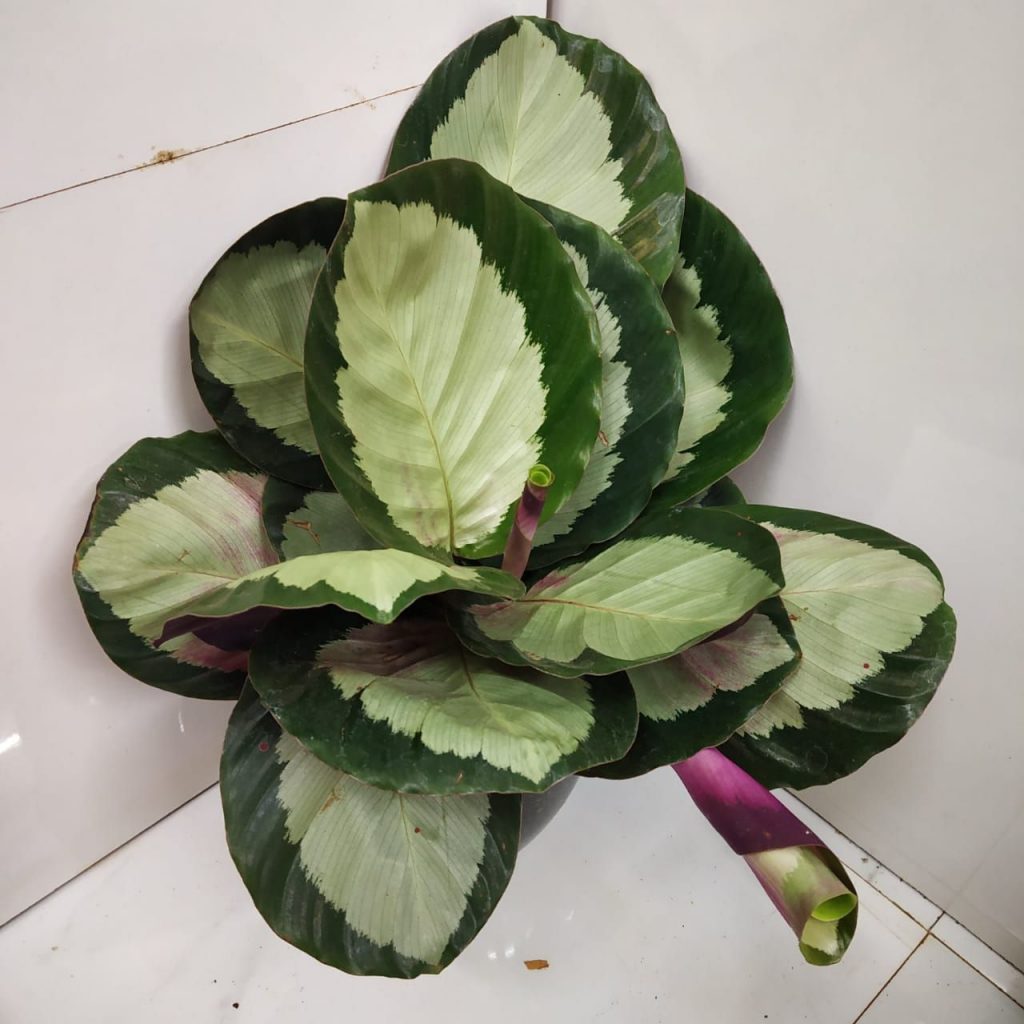
Signs of Over or Under Watering
Over and underwatering is the main culprit when it comes to the demise of a Calathea Plant.
If the plant is left sitting in water and the compost is too wet you may notice as the foliage starts to yellow and droop. Check the soil moisture and leave it to dry for a couple of days. The main issue with overwatering is when the roots begin to rot which eventually kills the plant.
When your Calathea Plant is underwatered the foliage will start to wilt and become very dry and crisp. If you notice wilting give your plant a good water and it should perk up in no time. Once the foliage becomes crisp and dried it is time to prune these to allow for healthy foliage to thrive.
Checking the first inch of soil every couple of days and watering when your plant really needs it will allow for a happy, healthy plant.
Fertilising your Calathea Plant
Your Calathea Plant doesn’t need much when it comes to fertilising. A little bit of general house plant feed periodically throughout spring and summer will do it just fine.
This will give it that extra boost for new foliage growth and flowering. Avoid adding the feed too late in the growing season as the plant will start putting out spindly growth in the winter.
Pruning Calathea Plants
One of the other pros of the calathea plant is that is doesn’t need regular pruning. Just perform general maintenance throughout the year removing any brown or yellow leaves to keep the plant healthy and looking good.
Extra Calathea Care Tips
The plentiful foliage on the Calathea plant is prone to collecting dust when kept indoors. The keep the leaves breathing easy and looking healthy, dust them off with a cloth when needed.

Calathea Plant Toxicity
Great news for pet and plant lovers, the Calathea is non-toxic to both cats and dogs so they are safe to have in the home along with animals.
Check out our range of Pet Friendly Plants for more information.
Calathea Plants Pests and Problems
While all house plants are prone to a few different pests and diseases, the main one to watch for with calathea plants is spider mites. While they can be an issue with all indoor plants they are mainly drawn to the leafy tropical variety.


